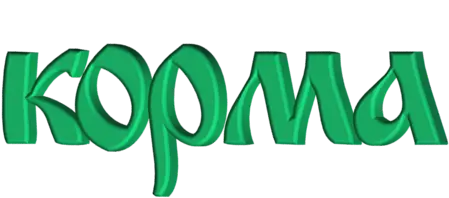Ducks
are a fast growing breed of poultry. They are frost-resistant and unpretentious in food. Their cultivation can bring a significant profit to the breeder, but it can completely ruin. One of the main causes of ruining is the wrong diet. After all, the purchase of products is the main part of the cost of maintaining livestock. Therefore, experienced breeders advise using combined dry food for ducks. It is designed to meet all the needs of this species and is a complete ration, which means it does not require additives. You can, of course, continue to spoil your pets with fresh grass, but now it’s just an addition, not a necessity.Утки
быстрорастущая порода домашней птицы. Они морозоустойчивы и неприхотливы в еде. Их выращивание может приносить заводчику существенную прибыль, но может и вовсе разорить. Одной из основных причин разорения является неправильно подобранный рацион. Ведь закупка продуктов это основная часть затрат на содержание поголовья.
Поэтому опытные заводчики советуют использовать комбинированный сухой корм для уток. Он разработан с учетом всех потребностей данного вида и является полнорационным, а значит не требует добавок. Вы, конечно, можете продолжать баловать своих питомцев свежей травой, но теперь это лишь дополнение, а не необходимость.
The advantages of compound feed are that:
- it contains up to 20 components at the same time;
- it is mixed to a homogeneous mass, which contributes to the uniform consumption of all components;
- it can be stored for a long time.
Diet of youngsters from 7 to 30 days
The diet of youngsters changes as they grow. At the age of 7 days, the digestion of chickens is considered to be stronger. Therefore, it is allowed to add new components to the already existing set of products. Such as:- millet,
- corn crap,
- wheat turd,
- bone meal,
- meat and bone meal,
- fish flour.
- new crops,
- fresh low-fat cottage cheese,
- hay flour,
- chalk,
- shell rock,
- sunflower cake,
- yeast.
Diet of youngsters from 30 to 49 days
This stage of development is considered the final period of maturation of the bird. From this moment on, the body will spend the bulk of the energy not on development and growth, but on mass gain. The diet at this stage of growing up no longer changes qualitatively, but quantitatively. The main components remain the same, only their ratio changes. The amount of corn grist increases by 3.5 times, wheat increases by one and a half; the number of other grains is increased three times. The mass of all remaining components is doubled.Feed groups
Ducks are pretty smart birds. They are able to find their own food. Moreover, the list of products consumed by them is quite diverse. For ease of perception, we will divide them into groups.- Cereal crops. This is the first and main component of poultry nutrition. First of all, they act as sources of carbohydrates, but some of them boast the presence of proteins and vitamins in their composition. Representatives of the group: corn, wheat, oats and others.
- Bean cultures. Basically, sources of carbohydrates and protein of plant origin. Peas, lupins, beans and others.
- Fresh herbs are sources of a wide range of vitamins. These include: clover, dandelion, yarrow and others.
- Vegetables. For ducks, this is a vitamin delicacy. Cabbage and carrots are especially valued for the large amount of vitamins they contain.
- Feed of animal origin. Their range is quite wide: fish meal, bone meal, meat and bone meal, fish oil, feed fat, eggs and others. They are primarily sources of animal protein, but also fat, vitamins and minerals.
- Mineral supplements. This group contains products that contain minerals necessary for the body of birds. They include: phosphorus, sodium, iron, zinc, copper and others. Their sources are most often: bone meal, chalk, shell rock, table salt and others.






